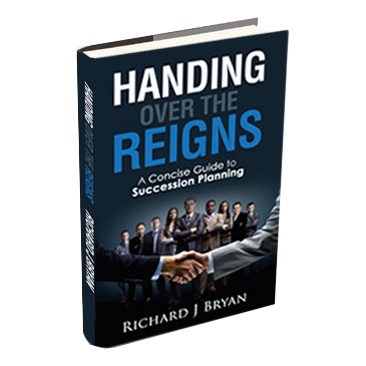This time of year, when up to 45% of people around the world are thinking about their New Year’s resolutions—to be healthier, to be happier, or more successful—I’m wondering about the 8% who actually follow through. What makes this very small percentage of people succeed, when so many others fail? Oddly enough, the answer may have less to do with what they do than with how they do it.
When it comes to New Year’s resolutions, experts believe that keeping your goals realistic, with smaller, achievable milestones along the way, may be the primary driver of success. In fact, breaking large-scale changes down into individual behaviors can help immensely. It’s also helpful to put them in writing and talk about them with friends, family and coworkers; the more detail you have about where you’re going and the more people who know where you’re headed, the more support you’ll have in getting there.
Both as a leadership keynote speaker and in the trenches of running the family business, I’ve often told my colleagues: it’s not enough to make a resolution—you need a revolution! And to do that, you need a clear action plan. Here are five simple steps you can take to become a better leader in 2019…along with my favorite goal-setting technique to see you through to success.
5 Leadership Resolutions for 2019
1. Ask for Feedback. I talk a lot about this on the leadership keynote speaker circuit, and I’ll admit it’s one of the hardest things I’ve ever done as a leader. Create a short, anonymous online survey (SurveyMonkey is a great free tool) that enables your employees to give you feedback in two general areas: what you should keep doing to be a better leader, what you should stop doing. You can also include an open-ended question that asks for new ideas—sometimes this provides the best insight.
2. Hear the Feedback. Did I say asking for feedback was hard? That wasn’t perfectly accurate: hearing feedback is hard, especially when you’ve specifically asked for honest negative feedback! So tuck that old ego away with your summer suits, and try to organize your employees’ answers into broad themes you can systematically address. Remember, if your employees took the time to answer your questions thoughtfully, it means they’re invested in being part of the overall solution.
3. Plan SMARTER. Best-selling author and goal setting expert Michael Hyatt suggests your goals should be “SMARTER”, that is Specific, Measurable, Actionable, Risky, Time-Bound, Exciting and Relevant. I like this twist on the conventional SMART goals, as the “Risky” bit adds a bit of accountability to set goals that are a stretch without being ridiculous. The “Exciting” and “Relevant” bits are also a good measure of whether you are setting goals that are inspiring for you—and will therefore have a bigger payoff personally if you can achieve them. As I tell my leadership keynote speaker clients: always write your action plan down, but don’t feel the need to write a treatise. Keep it short and to the point.
4. Commit Out Loud. Once you’ve got a plan, shout it from the mountaintops! Thank your team, publicly, for their feedback, and tell them exactly how you’re going to address it. As with any resolution, sharing your goals makes you more accountable AND conveys to your team that you’ve heard what they had to say. Then, all that’s left to do is follow your own action plan…I’ve included my favorite technique below.
5. Review Regularly. I review my goals at least once per week, normally on a Sunday evening when I take time to plan out the coming work week. This step is absolutely vital, as it acts as a catalyst for taking action every week in order to move towards your most important goals for the year.
My Goal-Getting Technique: Future Basing
I first heard about Future Basing from business coach Bill Phillips, when I saw him speak to a group of CEOs that I was part of in London about 15 years ago. You start by setting a date in the future—it could be six months or five years from now. Write the date in the present tense: For example, “It is 1 January 2019”. Then list the things that you have achieved in this perfect world, in the past tense, such as “I have just home-brewed my first IPA,” or “I have just completed my first IPO.” The more precise you can be when writing out your desired achievements, the better…and only use positive language.
What happens during this process is that you activate the power of your subconscious to focus on what you really want by envisioning how it feels to say that you’ve already achieved it. Here’s the really amazing thing, though: once you have done this, you seem to find lots of opportunities to make your desired goals become a reality. If this sounds a little far-fetched, let me share with you a true story.
Having seen Phillips’ presentation in London, I decided to try this technique with my own management team. We all picked a date in the future using the present tense. We were very specific about the goals that we wrote down, in the past tense—as if we had already achieved them. Then, to be honest I forgot all about it! A few years later, when we were moving house, I found my list of goals…and I had achieved nine out of the ten! The only one I had not achieved was written in a negative way.
So does setting your goals in this way mean that you don’t need to work hard and focus? Definitely not. But I do believe that you will find more opportunities to move your life in the direction that you want to go, in a proactive way, rather than just drifting along and reacting to whatever comes your way. Good luck with this process and let me know how you get on in 2019 with your goal setting and Future Basing.
Check out my Vlog for additional information: https://vimeo.com/309122429
Related Topics:
3 Daily Time-Sponge Tasks You Could Be Delegating


